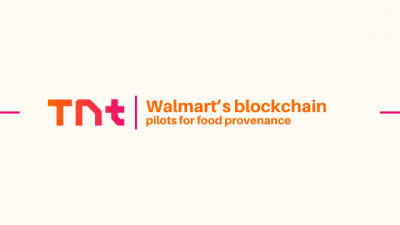Access to timely and structured data has become a critical advantage for businesses in almost every industry. Whether it’s tracking competitors, monitoring market trends, or optimizing business strategies, data-driven decision-making plays a key role in staying ahead. However, manually collecting and processing large volumes of online information is neither efficient nor scalable.
Web scraping has emerged as a powerful tool that automates data extraction, enabling companies to gather insights faster and more effectively. As we move into 2025, web scraping is evolving—new technologies are improving its efficiency, regulatory landscapes are becoming stricter, and businesses are looking for more sustainable ways to extract and utilize data.
In this article, we explore the most significant trends shaping the future of web scraping, the challenges businesses face, and the best practices to ensure compliance and efficiency in the years ahead.
Emerging Trends in Web Scraping for 20251. AI-Powered Web Scraping Becomes More Advanced
Artificial Intelligence (AI) and Machine Learning (ML) are revolutionizing the way data is collected and processed. Traditional web scraping tools rely on predefined scripts and patterns to extract data, but AI-powered scrapers can adapt dynamically to website structure changes, making them significantly more resilient to anti-bot mechanisms.
AI-driven scrapers can:
- Recognize and extract data from unstructured sources like images, PDFs, and videos.
- Simulate human-like browsing behavior to avoid detection.
- Learn and adjust to CAPTCHA challenges without human intervention.
By 2025, AI-driven automation will make web scraping even more efficient, reducing maintenance efforts and ensuring higher accuracy in data collection.
2. The Rise of Headless Browsers and Automation Frameworks
Websites are becoming increasingly JavaScript-heavy, making traditional scrapers less effective. To handle dynamic content, businesses are adopting headless browsers like Puppeteer, Playwright, and Selenium, which allow scrapers to interact with web pages as a real user would.
Headless browser-based scraping enables:
- Extraction of content loaded via JavaScript, such as prices, stock availability, or social media feeds.
- Seamless handling of infinite scroll, pop-ups, and authentication barriers.
- Improved bypassing of bot detection algorithms used by modern websites.
This approach ensures that web scrapers can navigate complex websites without being blocked, making it a game-changer for industries that rely on real-time data.
3. Ethical and Legal Scraping Gains More Attention
Data privacy regulations like GDPR (Europe), CCPA (California), and other global frameworks have raised questions about what kind of data businesses can scrape and how they should use it.
With lawsuits and legal disputes surrounding web scraping (such as LinkedIn’s case against HiQ Labs), businesses need to ensure they are operating within ethical and legal boundaries.
Best practices for legal compliance include:
- Scraping only publicly available data and avoiding login-restricted content.
- Respecting robots.txt directives and website terms of service.
- Avoiding personal or sensitive data that falls under privacy regulations.
In 2025, more companies will prioritize ethical scraping to avoid legal risks while still leveraging data to drive business success.
4. Real-Time Data Becomes Essential
With businesses making faster decisions, the demand for real-time web scraping is on the rise. Industries such as finance, e-commerce, travel, and digital marketing require instant access to pricing, trends, and customer feedback.
Real-time web scraping allows companies to:
- Monitor stock market trends and adjust investment strategies.
- Track competitor pricing and optimize their own price points.
- Analyze customer sentiment on social media and review sites.
As technology advances, web scraping solutions will be optimized to deliver faster, real-time data while reducing infrastructure costs.
5. Growth of No-Code and Low-Code Scraping Solutions
Not all businesses have the technical expertise to build complex scrapers. The rise of no-code and low-code scraping tools enables non-developers to extract data without writing a single line of code.
These solutions offer:
- Drag-and-drop interfaces for defining what data to collect.
- Cloud-based automation for continuous data retrieval.
- Integrations with BI tools for real-time analytics.
While these tools won’t replace custom-built scraping solutions for large-scale operations, they will make data extraction more accessible to small businesses and analysts.
Challenges in Web Scraping Moving Forward1. Evolving Anti-Scraping Technologies
Websites are constantly updating their defenses to block automated data collection. From advanced bot detection (like Google’s reCAPTCHA) to IP blocking mechanisms, scraping is becoming more challenging.
Solutions include:
- Rotating proxies and residential IPs to mimic real users.
- Human-like interaction patterns to avoid detection.
- Machine-learning-based scrapers that adapt to website changes.
2. Data Quality and Consistency Issues
Scraped data is often messy and requires significant cleaning and validation before it becomes usable. Businesses need advanced data parsing, deduplication, and error detection mechanisms to ensure high-quality insights.
3. Infrastructure Costs and Scalability
Running large-scale scraping operations can be expensive. Companies must optimize resources, use serverless computing, and adopt cloud-based solutions to scale efficiently while minimizing costs.
Best Practices for Ethical and Effective Web Scraping1. Respect Website Policies
Always review a website’s robots.txt file and terms of service before scraping. Even if public data is accessible, some sites prohibit automated data extraction.
2. Implement Smart Scraping Strategies
Avoid detection by:
- Using rotating IPs and proxies.
- Randomizing request patterns instead of making repetitive calls.
- Mimicking human behavior with realistic browsing intervals.
3. Ensure Data Privacy Compliance
Always follow data protection laws. Avoid scraping personal data, and if necessary, anonymize or aggregate the information to comply with privacy standards.
4. Invest in Custom Web Scraping Solutions
Generic tools often lack flexibility for large-scale needs. Custom-built scrapers tailored to a company’s industry ensure better data accuracy, compliance, and long-term efficiency.
5. Automate Data Processing and Validation
Data cleaning should be automated to remove duplicate records, errors, and inconsistencies. This makes analysis faster and more reliable.
The Role of Expert Web Scraping Providers
For businesses that rely heavily on data-driven decision-making, working with experienced web scraping providers can streamline operations.
GroupBWT specializes in custom web scraping solutions designed for industries that require large-scale, high-quality data extraction. By leveraging AI-driven automation, compliance-first strategies, and scalable architectures, GroupBWT helps businesses efficiently collect and utilize critical information.
If your company is looking for a tailored, secure, and scalable web scraping solution, GroupBWT can provide expert guidance and implementation.
Conclusion: The Future of Web Scraping is Intelligent, Ethical, and Scalable
As web scraping continues to evolve in 2025, businesses must stay ahead of trends, adapt to new challenges, and implement ethical best practices. With AI-powered automation, better compliance strategies, and a growing demand for real-time insights, web scraping remains a critical tool for business success.
By embracing ethical, efficient, and scalable data extraction techniques, companies can gain a competitive edge without compromising on compliance or quality.
Information contained on this page is provided by an independent third-party content provider. Binary News Network and this Site make no warranties or representations in connection therewith. If you are affiliated with this page and would like it removed please contact [email protected]



Comments